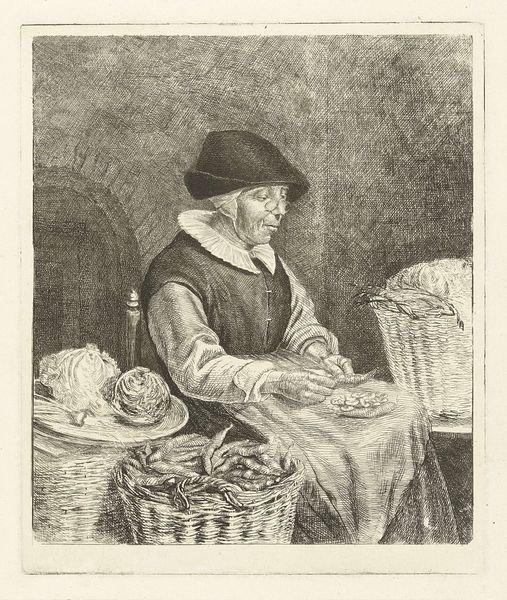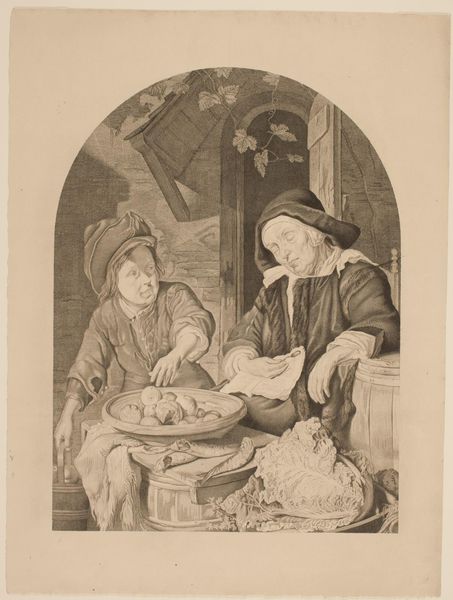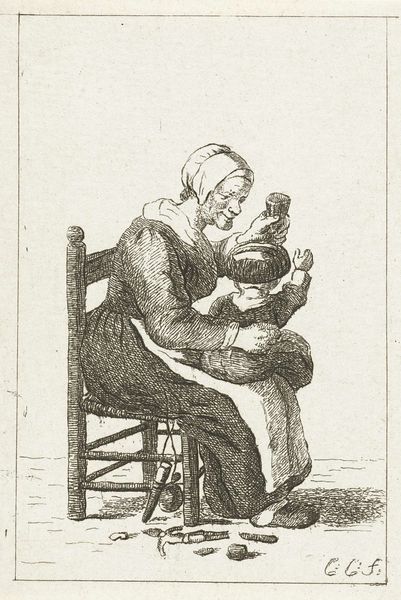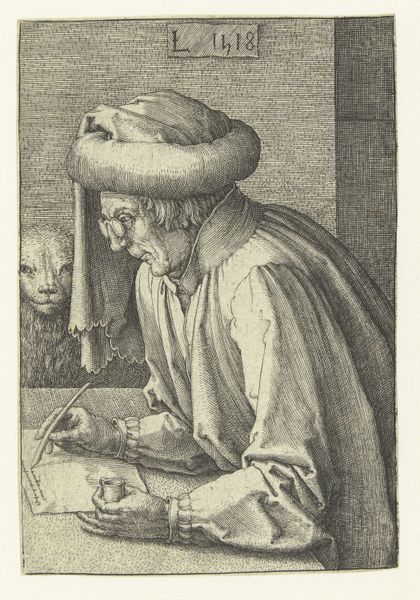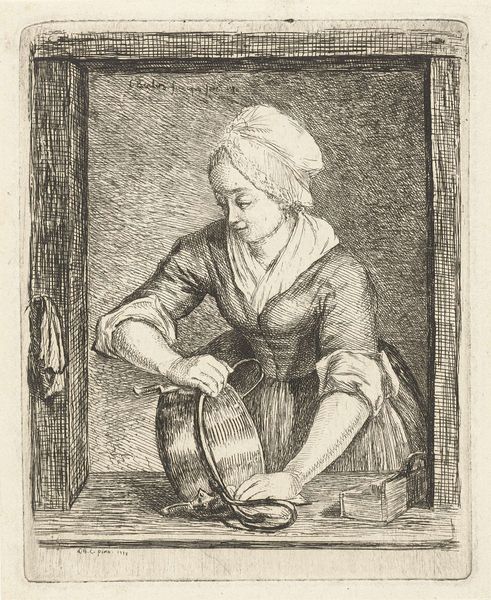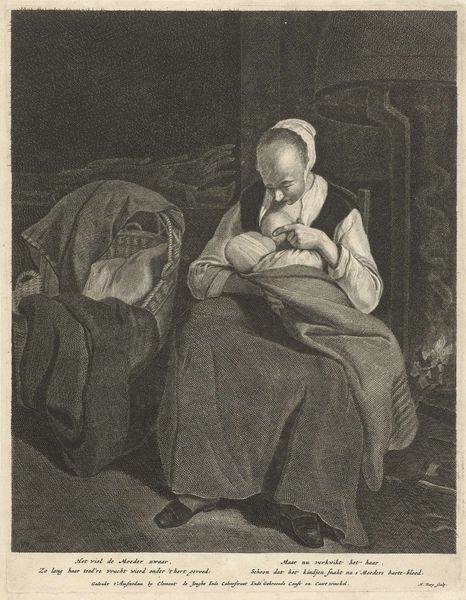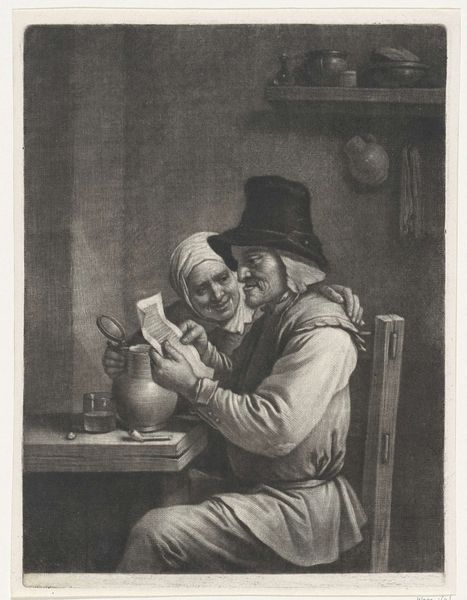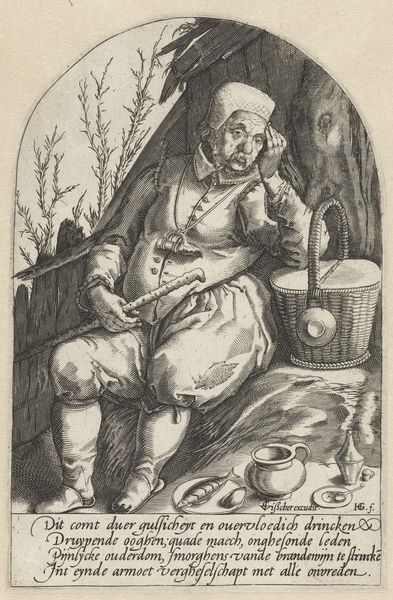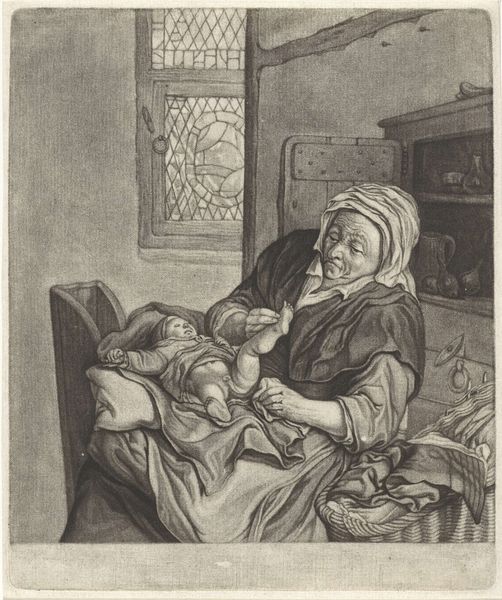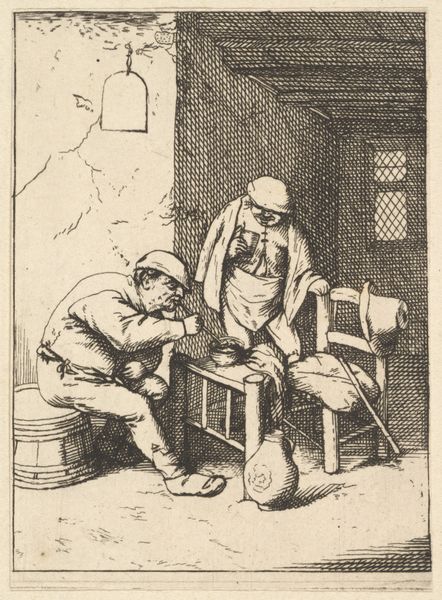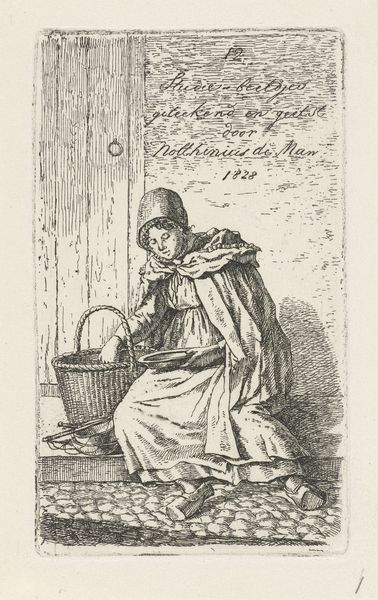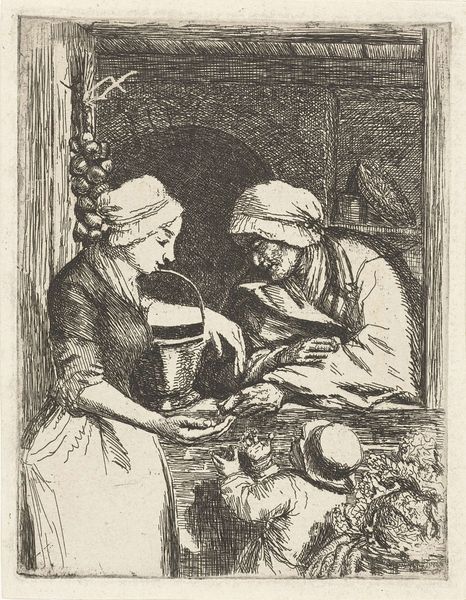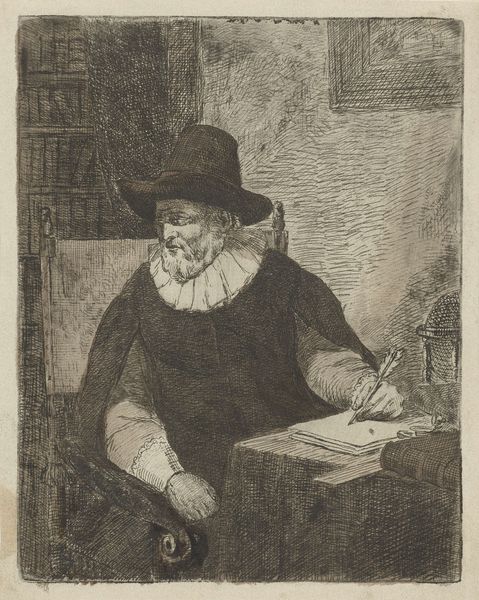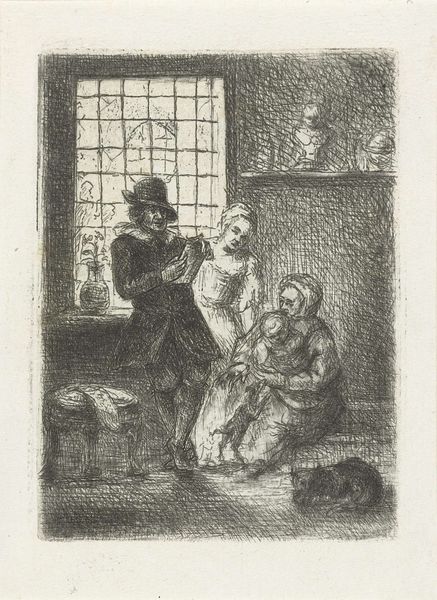
Dimensions: height 276 mm, width 233 mm
Copyright: Rijks Museum: Open Domain
Curator: Let’s consider this etching, “Oude vrouw bij het boontjes doppen,” or “Old Woman Shelling Beans” by Louis Bernard Coclers, created around 1780. It's a lovely example of genre painting rendered in a meticulous etching style. Editor: It has a quiet dignity to it, almost melancholic. The light and shadow are very strong, casting a somber tone. All the mundane objects surrounding her almost make it like a still-life painting. Curator: Precisely. Look at how the artist utilizes etching techniques to define textures. The fine lines give volume and a sense of decay or even age, notably the woman's weathered hands and the worn baskets of food. Editor: Absolutely, the subject isn't idealized, which adds to the power of this art piece. The labor aspect stands out. Shelling beans all day would undoubtedly take a toll on anyone. I find myself wondering what the working class woman would think. Curator: Right, this connects to the larger social fabric of the late 18th century. How were resources and labor divided? We must ask about the socio-economic context in which an older woman finds herself performing a seemingly menial, repetitive, but probably also, nutritional, necessary task. Editor: I can imagine gender playing into all this: women often shouldered domestic chores while facing exclusion from certain economic activities. The etching almost turns domestic life into performance or quiet labor. Is it the artist, maybe of higher social stature, commenting, sympathizing, or merely documenting? Curator: These depictions provide a peek into past gender roles and economic pressures. This seemingly simple task—shelling beans—becomes symbolic. The labor she has been subjected to and the larger issue around the labor of those on the margins is worthy of deeper consideration. Editor: For me, that adds layers of depth to what I initially thought was simply a representation of day-to-day life. The more one reflects on this etching, the richer and deeper one understands how it ties into both art history and socio-cultural criticism. Curator: I agree wholeheartedly. By closely analyzing the materials, and the way labor is represented here, we understand this artwork not just as a static image, but a crucial contribution to conversations about social history, material culture, and representation.
Comments
No comments
Be the first to comment and join the conversation on the ultimate creative platform.
